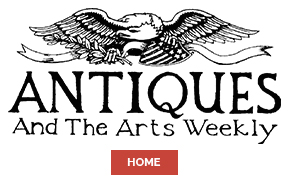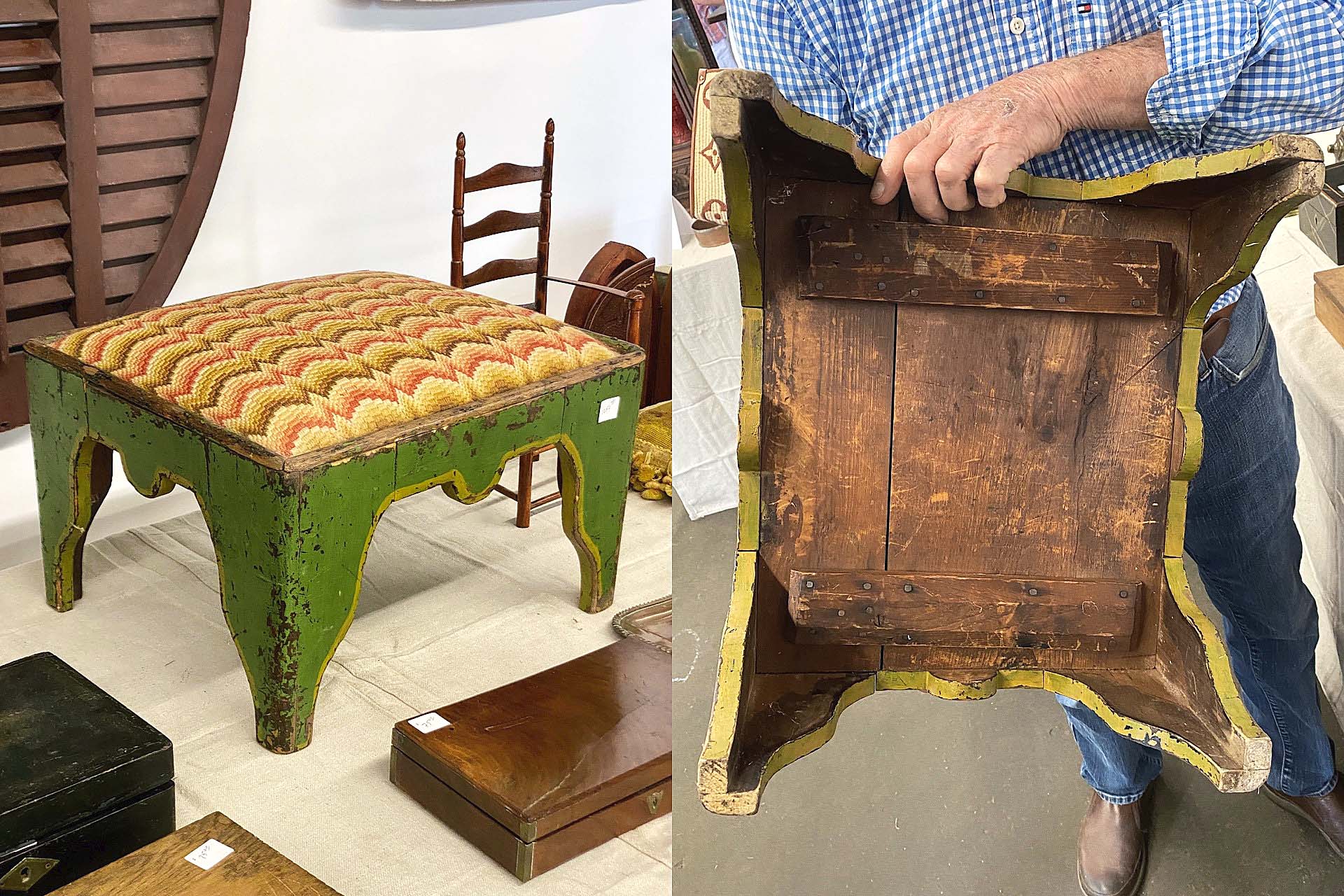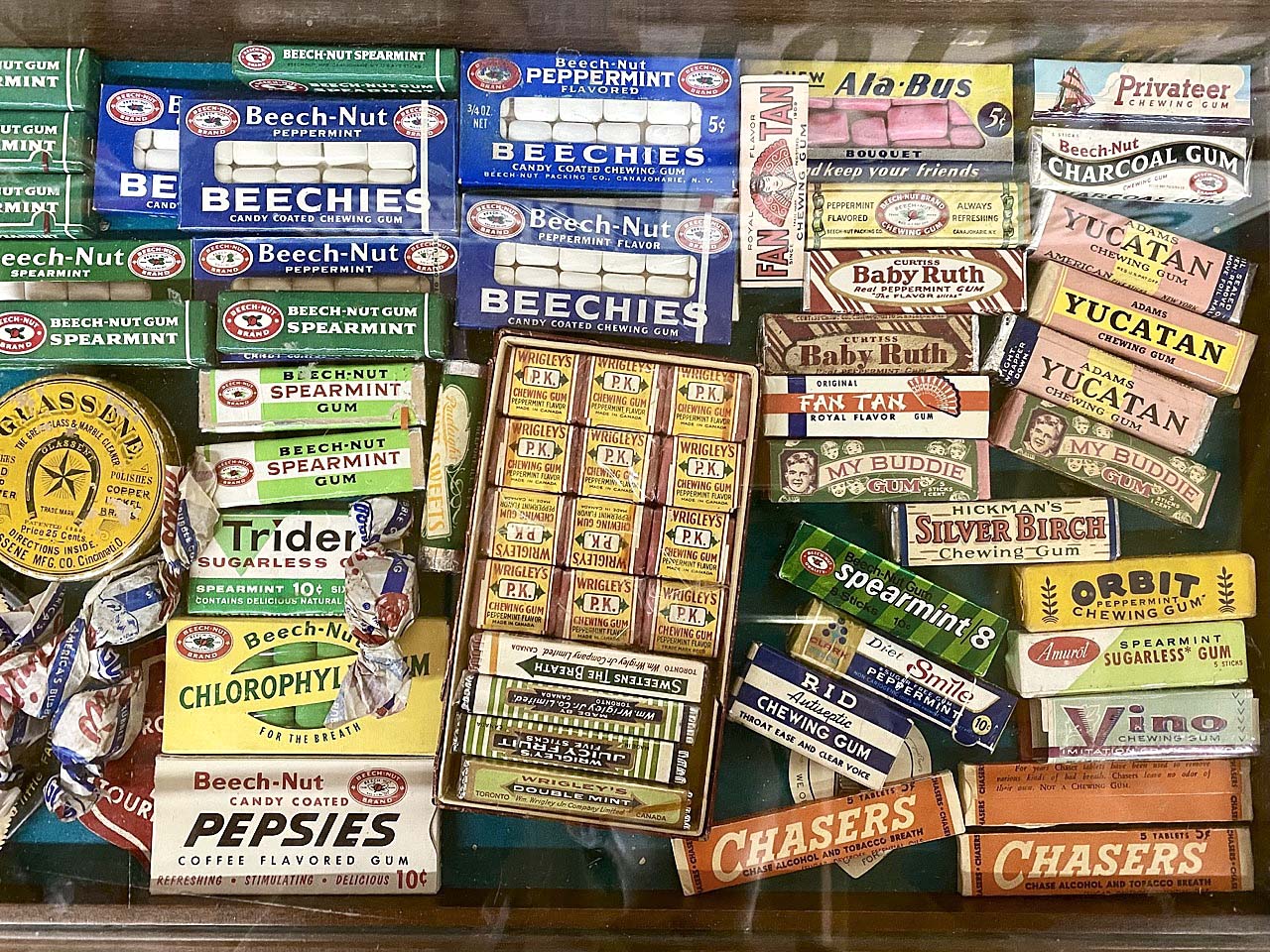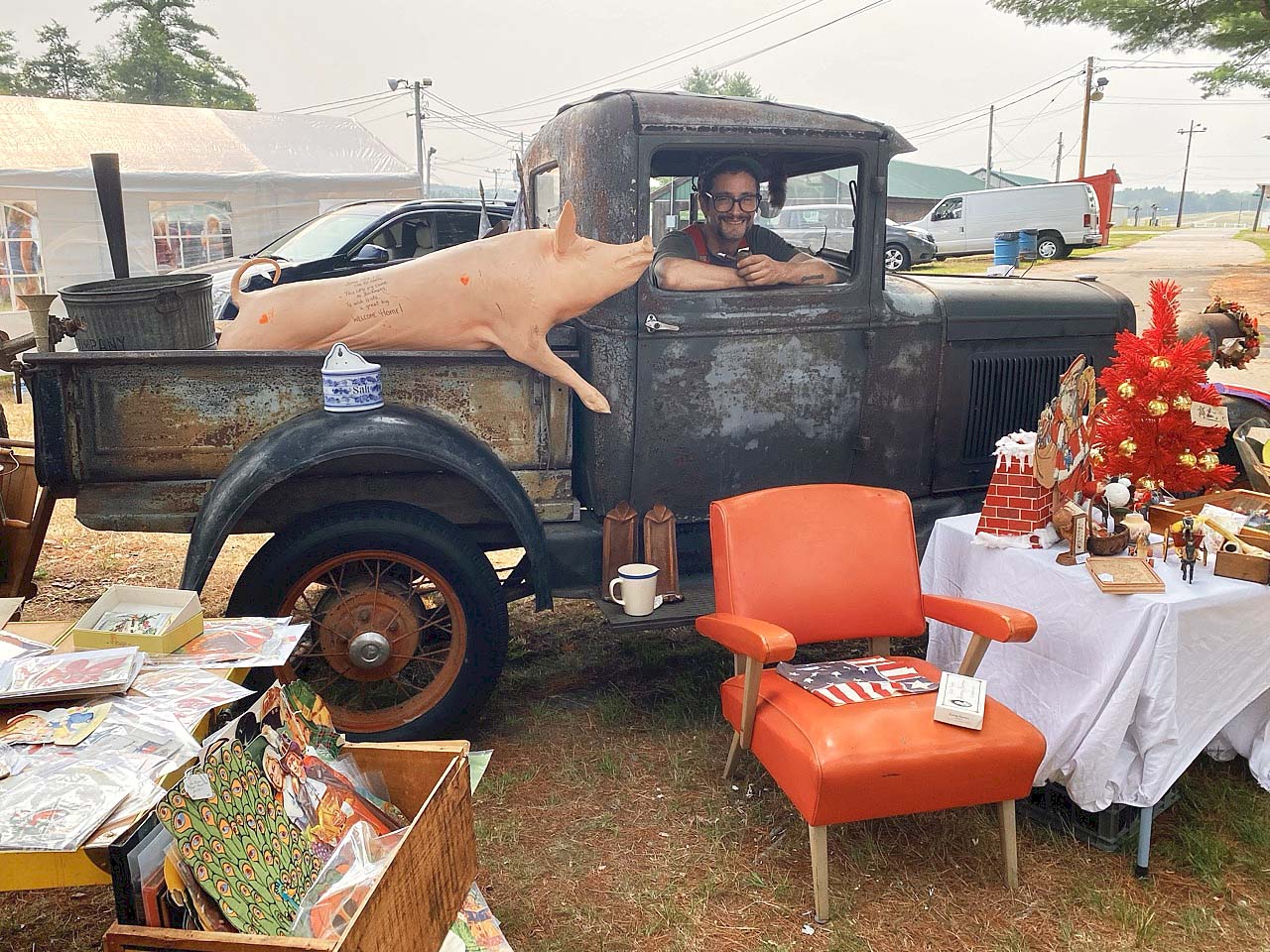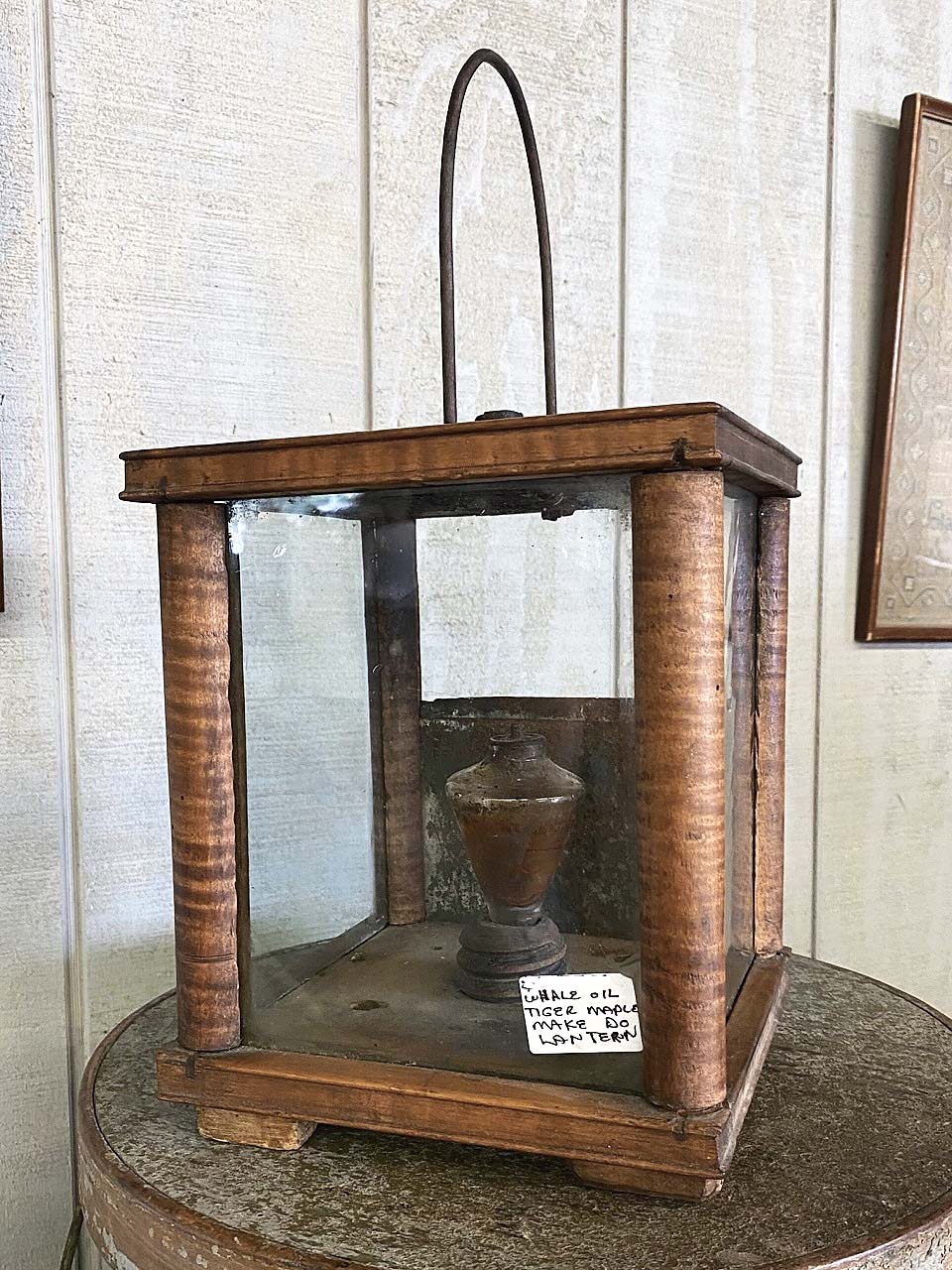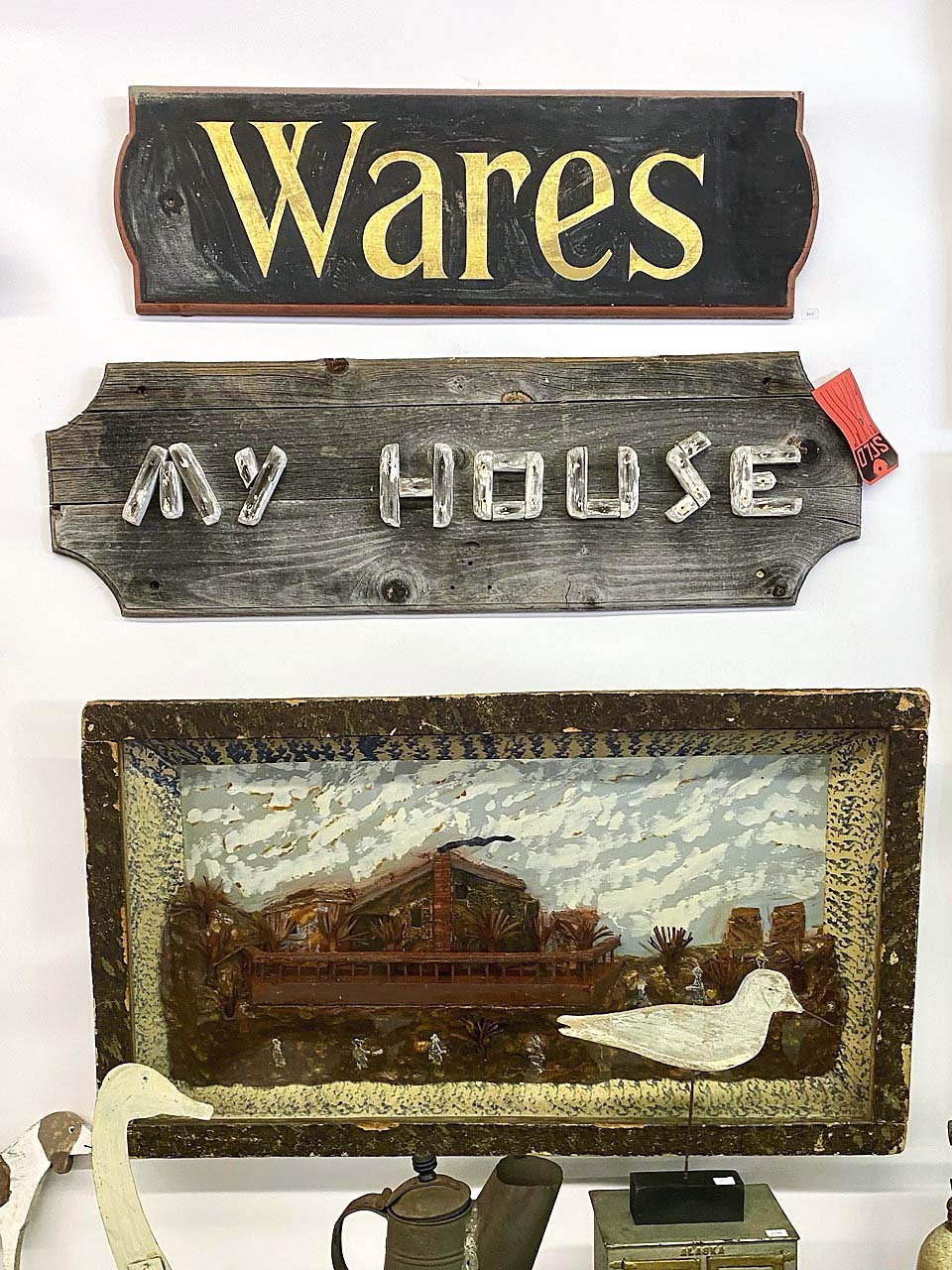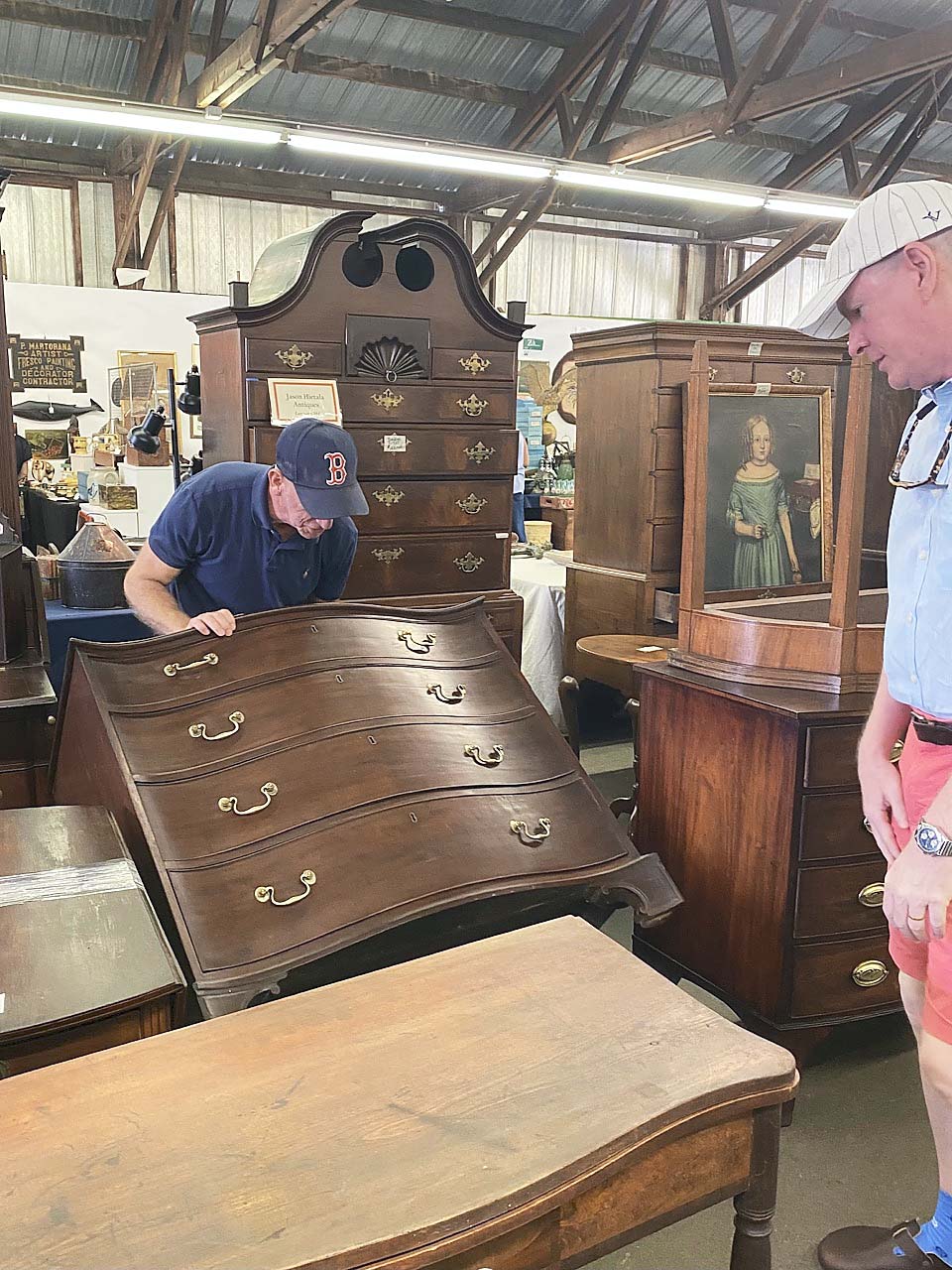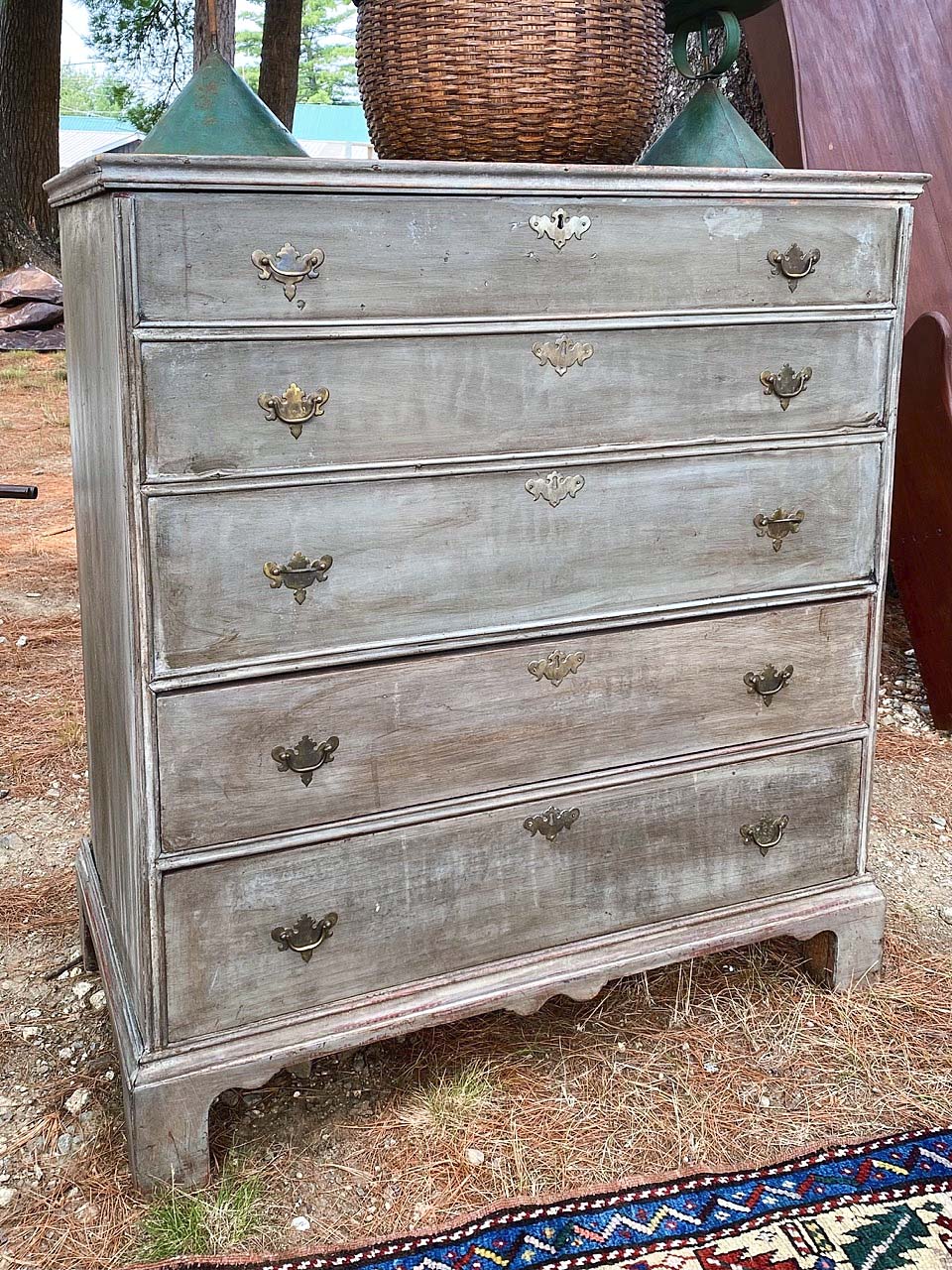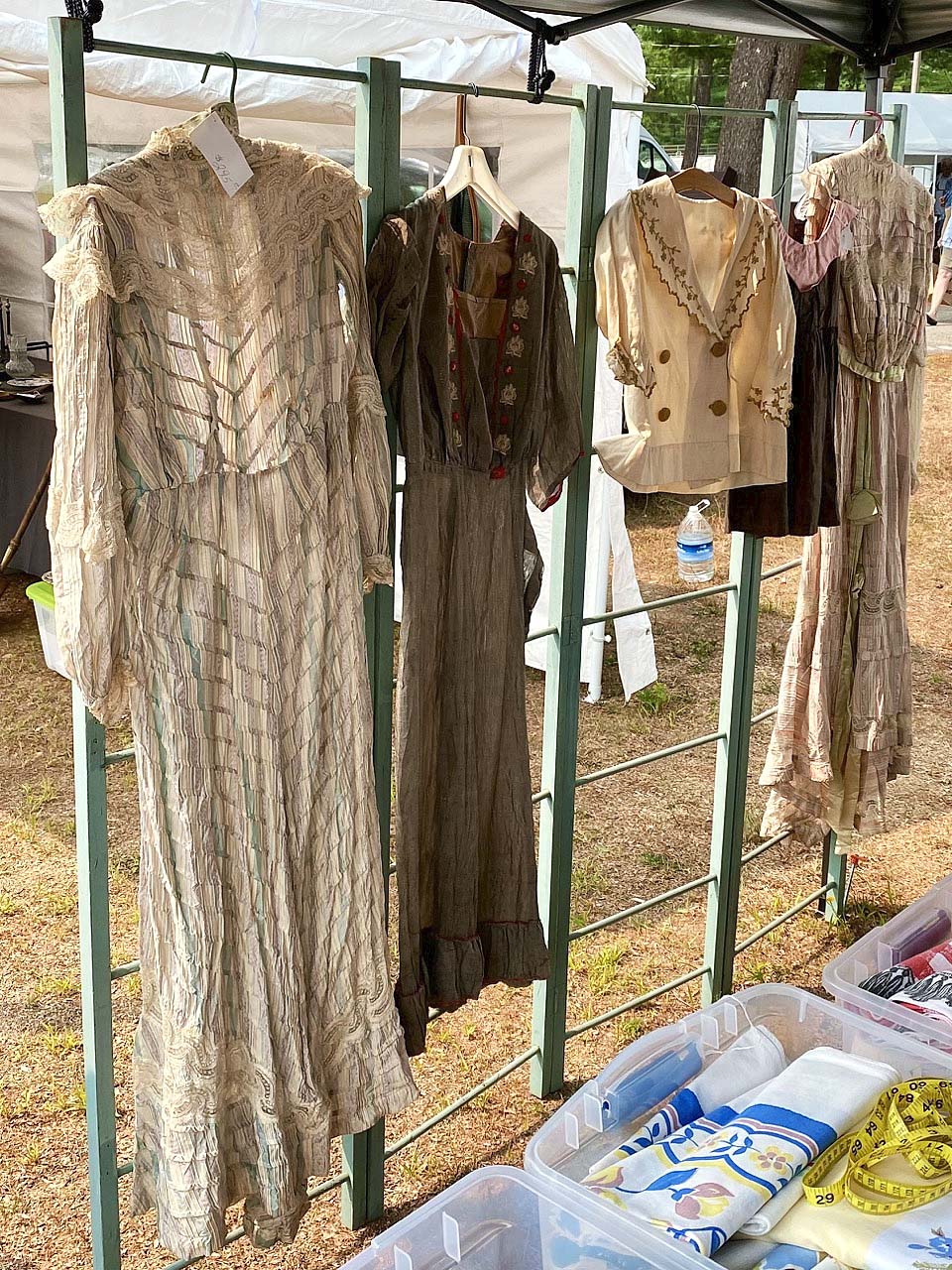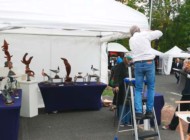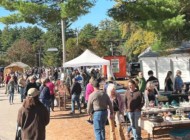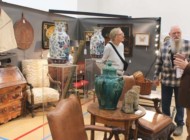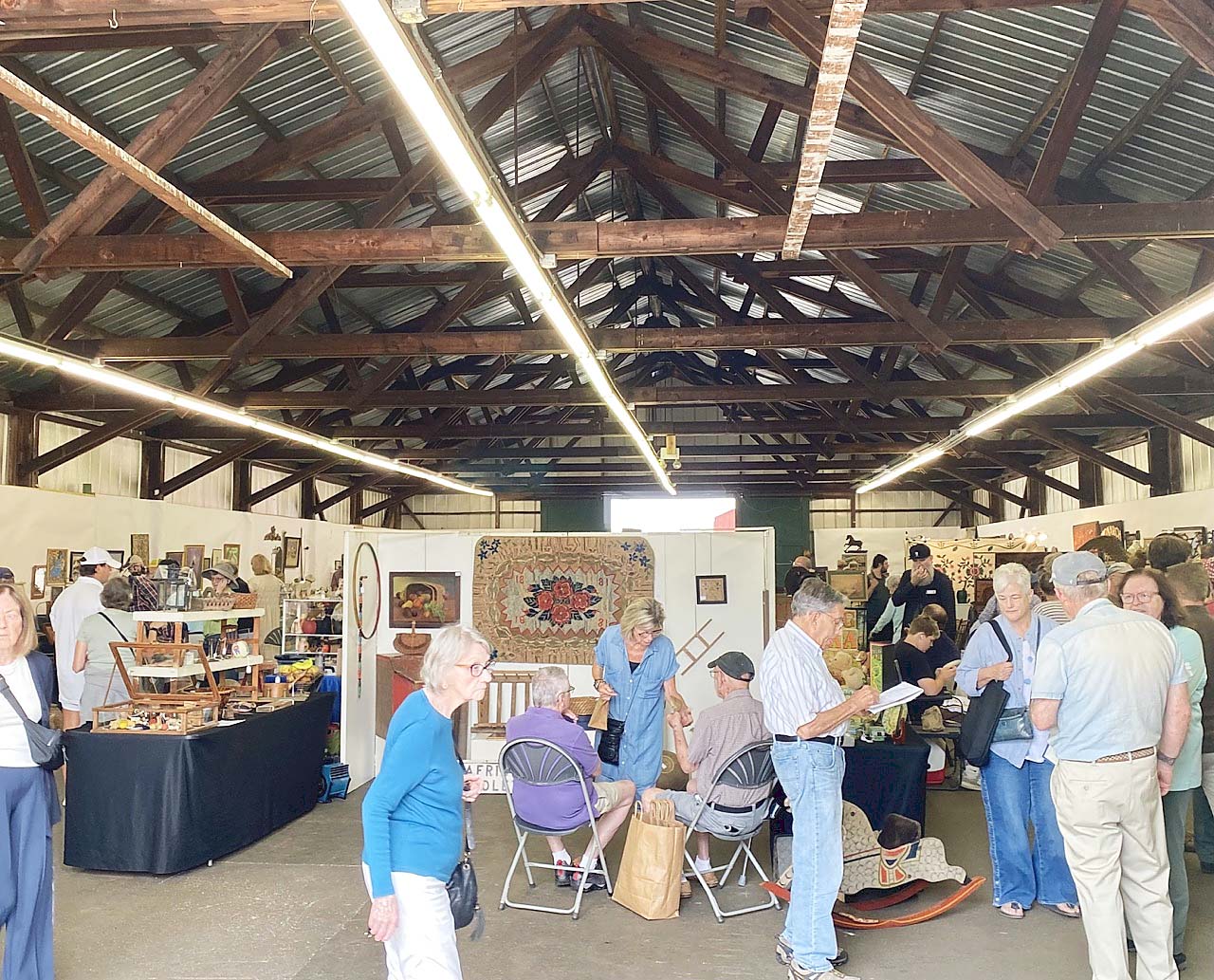
One of three large warehouses sheltered many of the Deerfield Antique Shows’ 75 dealers.
Review & Onsite Photos by Z.G. Burnett
DEERFIELD, N.H. — On Monday, August 4, the booths of more than 75 dealers filled three buildings and their surrounding pathways with more than four centuries’ worth of antiques and vintage goods at the Deerfield Antique Show. Operated by Gurley Antique Shows, the event was hosted by the Deerfield Fairground and offered ample customer accommodations such as golf cart transportation from the parking lot with helpful drivers dispersing water bottles on that warm, sunny day. Though the venue was textbook country Americana, the wares on offer exceeded the limits of that category to great effect. “Sold” tags popped up within half an hour of opening, and many customers were spotted carrying out purchases and returning for more. Showrunner Rachel Gurley reported a great show overall with higher attendance than last year. “It was wonderful to fill the third building with dealers and the outside was really rounded out,” she added. “We love Deerfield and we are grateful to our dealers and customers who support such a long-lasting family tradition.”
Hooked rugs are abundant at Americana shows but a mounted example from Matt Greig, Milton, Del., fit the venue’s bill perfectly. His booth’s centerpiece was a square rug made circa 1925, showing a quarter bust, bridled chestnut framed by a large horseshoe hand with a puppy in each corner. “I love the folkiness of the horse,” said Greig, referring to its endearingly lopsided execution. “With the puppies… it’s a great combination of motifs.” Greig reported a few days later that he still has the rug but had a solid show sales-wise. “I found a few cool objects for my inventory and was happy to see some friends as well,” he added.
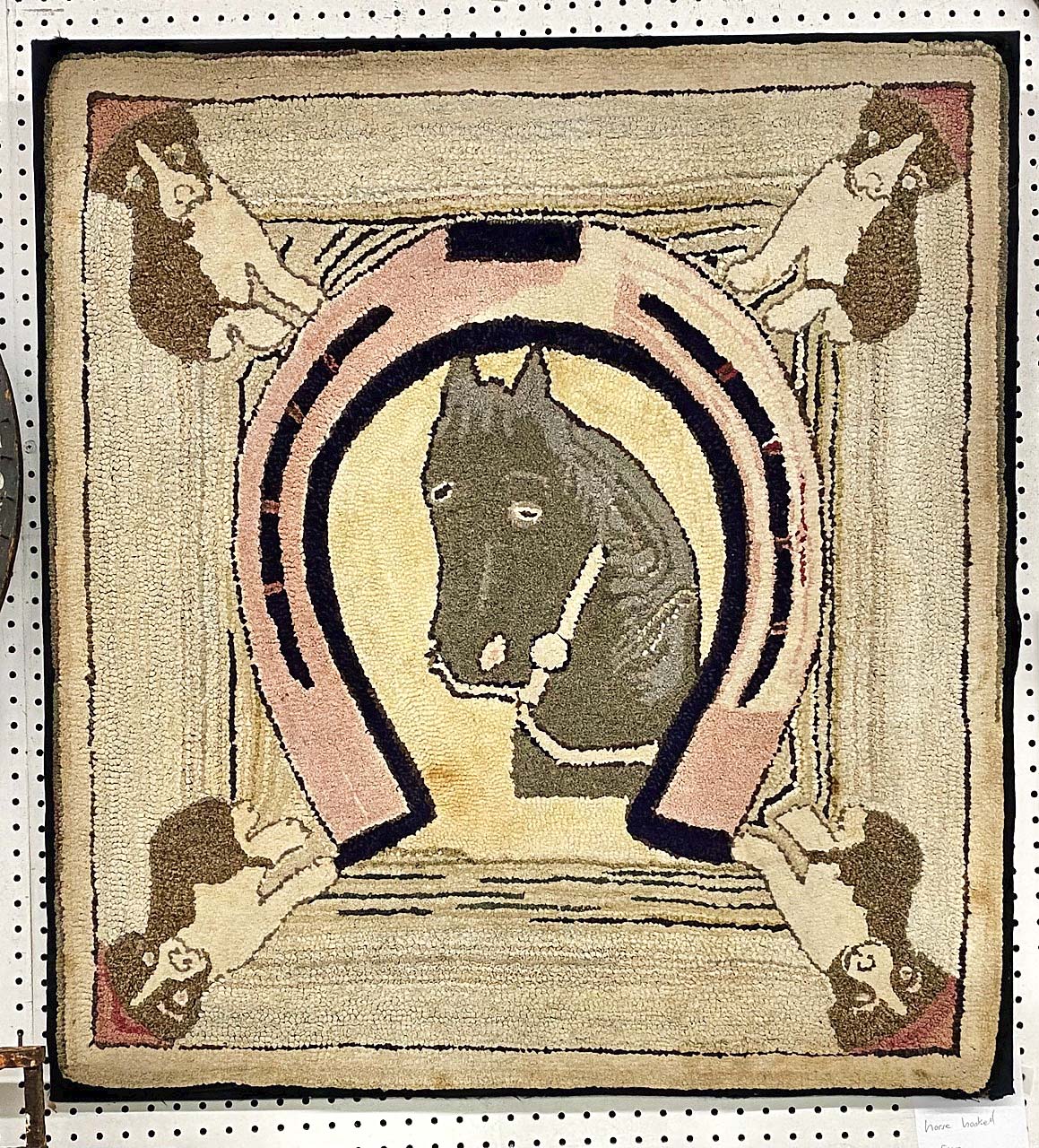
“It’s a great combination of motifs,” said Matt Greig, Milton, Del., of the charming home-hooked horse and puppies on this 1940s rug.
Another intriguing piece of handwork predated the hooked rug by two centuries or so: a flame-stitch sampler used for upholstery on a painted Queen Anne footstool from Buckley Mills, Rising Sun, Md. Retaining an original surface of copper-green paint and a thin yellow border, the stool showed perfect age and wear where previous owners’ shoes or slippers created bald spots on its upper edges. The flame-stitch sampler was certainly of the period, if not its first cushion cover. Despite its humble function, the footstool’s underside revealed even further how well cared-for it had been. There were no repairs or later blocks, and all of the nails that tacked down supports seemed original save for an old screw that might have secured some wobbling due to shrinking or expansion. The stool was so well-preserved that a buyer might be tempted to continue using it after purchase, but we hope that concern for the flame-stitch upholstery would prevail.
New England Seasons, Rehoboth, Mass., also displayed a unique piece of woodwork, albeit it was slightly less functional for contemporary living than a shelf or a footstool. Described as a “sailor’s whimsey,” the object was a ladle-like instrument with a carved coconut shell bowl attached to a wooden chain, probably used for gathering fresh water while on land. Most sailors were also skilled carpenters who could be called upon for repairs during the age of wooden vessels during long sea voyages, and whittling spare wood was a common pastime along with carving bone or ivory. This remarkable example was carved from a single piece of wood, with exception to the coconut shell, meaning that each individual chain link had to be whittled into attachment from the same block. One snapped link would ruin the whole chain, but luckily no such accident occurred with this whimsey.

This sailor’s whimsey was painstakingly whittled from a single piece of wood, chain and all, except for the coconut ladle at the end. New England Seasons, Rehoboth, Mass.
Another eye-catching find hung prominently in Joseph Martin’s booth: a rare triangular shelf found locally to Moretown, Vt., where he lives. “I bought it from my son [Tom] this morning,” Martin shared. The Nineteenth Century shelf resembled Scandinavian designs of the same era, and the skill of its maker was illustrated by the ornate, curved openings that provided protection to goods on each tier. With little wear on the original black and gold paint except on the lower corners, the shelf was remarkably well-preserved. “If I don’t sell it today, it’s going in my house,” added Martin.
One of the show’s best glass pieces was found in South Hadley, Mass., dealer Paul K. Graves’s booth, a dark olive three mold-blown ink bottle from the Keene-Marlboro-Street Glassworks. The Keene N.H.-based factory operated from 1815 to about 1850 and is a significant name, especially among bottle collectors, who might recognize the ink’s GIII-29 classification from George and Helen McKearin’s 1941 publication, American Glass. Its diamond geometric pattern was strongly embossed, showing a tooled disc mouth and pontil with less wear on the bottom surface than is usual for glass of this age. The ink was in almost perfect condition and is still available from Graves at the time of this report.
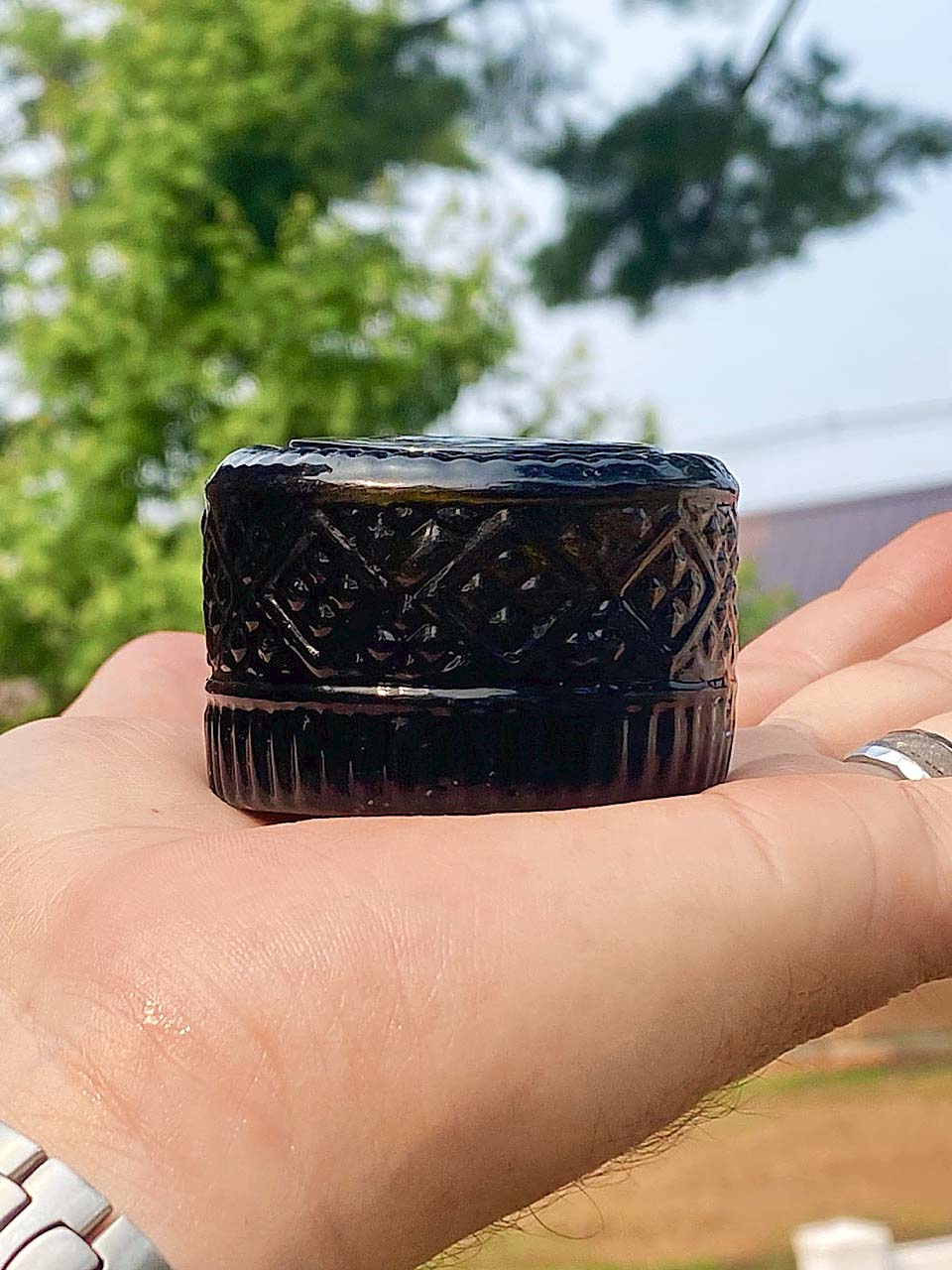
Paul K. Graves presented possibly the show’s finest piece of blow-molded glass: a dark olive Keene, N.H., ink with a diamond geometric pattern (GIII-29) in excellent condition. South Hadley, Mass.
Ceramics were abundant at Deerfield, and lusterware seemed to be trending. However, only Christopher Stanley, Bremen, Maine, brought a pink Sunderland chamber pot that put current humorous anniversary cards to shame. Before indoor plumbing, those living in close quarters were far more intimate regarding each other’s bodily functions in ways few could abide today. Between 1820 and 1850, chamber pots featuring daring verse and risqué transferware illustrations became common wedding gifts for those who took such inconveniences in stride. Other examples feature three-dimensional frogs on the inner bowl, and even images of Napoleon Bonaparte appeared on earlier chamber pots. Stanley’s was priced accordingly with regard to its broken handle and would have made a better gift for an antiques-loving couple than anything else on their registry.
Elaine Fleming, Middleboro, Mass., presented another object from a bygone era that is now more for collecting than use. Whale oil lanterns come in all shapes and sizes, and Fleming’s was distinctive for its “make-do” application of materials. Probably dating from the late Eighteenth to early Nineteenth Century, the lantern was made on Cape Cod and had an interior glass lamp with a coiled support, accessible by a tin rear door. Its exterior wood was tiger maple, which was usually reserved for more expensive furnishings, but the lantern seems to have been constructed with pieces left over from another project. Its front left foot showed where veneer might have been lost, revealing a pine block support underneath. According to Fleming, the lantern has yet to find a safe new harbor.
Gurley Antique Shows’ next event will be the Dover Antique & Vintage Market on September 13. For information, 207-396-4255 or www.gurleyantiqueshows.com.
